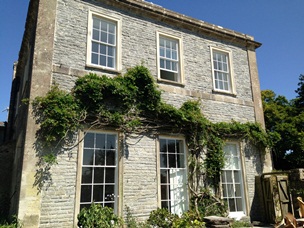 Historical houses are fortresses. Robust and built to last, those still standing have stood the test of time (and passed with flying colours). A house that was built in 1700, for example, will have survived around 3,000 thunderstorms, 300 metres of rainfall and 314 frosty winters. However, exposure to the elements can pose serious risks to an old house.
Historical houses are fortresses. Robust and built to last, those still standing have stood the test of time (and passed with flying colours). A house that was built in 1700, for example, will have survived around 3,000 thunderstorms, 300 metres of rainfall and 314 frosty winters. However, exposure to the elements can pose serious risks to an old house.
So, how exactly can the weather damage your house?
Storm damage
Obviously, storms can cause a lot of severe damage to historical homes very quickly. Lightning can strike anywhere, but it can be particularly destructive to buildings that already require a lot of care and upkeep. During storms, strikes to the roof may let in rain and cause water damage throughout the house.
Damp, mould and rot
It rains for over half the days of the year in the UK. So while a small rain shower might not seem like a big deal, the cumulative effect of rainfall on unmaintained houses may cause problems like damp, leading to mould on the walls or rot in timber window frames. Misplaced roof tiles can cause water to drip down through the building, causing similar issues through the ceiling.
Burst pipes
Older houses may still have their original indoor plumbing made from lead or galvanised iron. In winter, old pipes can freeze with the water still inside, which will expand and burst the pipe. Often this goes unnoticed until the pipes in the walls or under the floorboards begin to leak.
Cracked walls
Frost can also be the culprit for cracked and crumbling walls. Water that runs between the stones or bricks freezes and expands, leading the crack to grow bigger and chip parts away. This problem may start small and silent, but can lead to larger cracks and even structural damage.
How do I prevent weather damage to my historical house?
The best way of making sure that weather damage doesn’t occur is by keeping your property in tip-top condition. Regularly maintain and repair your property so a small issue doesn’t grow into an unmanageable one.
Check the roof for missing slates or tiles – it’s much easier to repair a few loose or broken tiles than treating water damage to the rest of your property. Replace old pipe systems or at the very least lag or insulate the pipes in time for the next winter. Finally, make sure to clear gutters and drainpipes of leaves and other detritus so that water can flow away from your house properly.
Wessex Restoration can help repair wooden windows as well as timber decorative pieces for weather-damaged properties. Call us on 01275 810322 or send us a message for more details.




